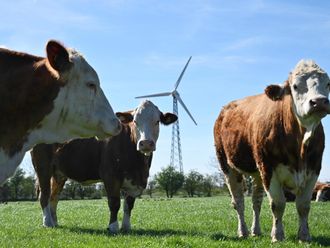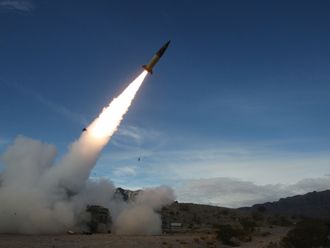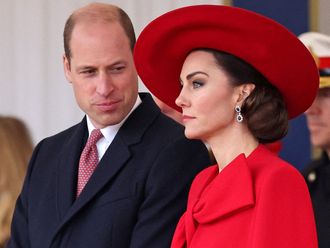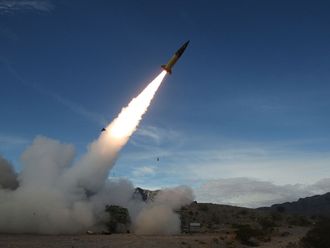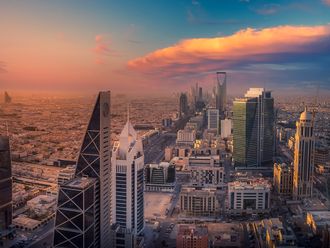
Baku/Yerevan: Azerbaijan said three of its soldiers were killed on Monday in clashes over the breakaway Nagorno-Karabakh region, a third day of renewed violence that risks turning the “frozen conflict” into all-out war.
Ex-Soviet states Azerbaijan and Armenia fought a war over Nagorno-Karabakh in the 1990s that ended with a fragile truce.
That was broken over the weekend with the most ferocious fighting in years, killing dozens of people on both sides.
Armenian President Serzh Sarksyan said if the fighting continued on a large scale, his country would formally recognise Nagorno-Karabakh as independent from Azerbaijan, and formalise Armenian military aid to the separatists.
Accounts from Azerbaijan and the ethnically Armenian separatist forces on Monday indicated that fighting was less intense than at its peak on Saturday.
But there was no sign that the flare-up in fighting could be quickly contained, despite calls from world powers for an immediate halt to the fighting.
A return to war would destabilise a region that is a crossroads for strategically-important oil and gas pipelines. It could also drag in the big regional powers, Russia and Turkey.
Moscow has a defence alliance with Armenia, while Ankara backs Azerbaijan.
Russian Foreign Minister Sergei Lavrov said a statement by Ankara expressing strong support for Azerbaijan was “one-sided”.
“This is a crucial few days,” said Thomas de Waal, Senior Associate at the Carnegie Endowment, a think tank. “The whole conflict zone is on the brink of a wholesale war, which could be disastrous for everybody.”
It was impossible to establish what caused the weekend outbreak of violence. Both sides blamed the other for starting it.
The fighting was around the “contact line,” a heavily-mined no-man’s land that, since the 1994 ceasefire, has separated the separatists, in the foothills of the Karabakh mountains, from Azeri forces dug into defensive positions in the plains below.
Azerbaijan’s military and the separatist forces attacked each other with tanks, helicopters, missile systems and artillery. Each said they had captured small chunks of territory from the other side.
On Monday, the separatist military said it had destroyed an Azeri army unit, while Azerbaijan said it had struck a separatist command point, causing several casualties. Reuters could not independently verify those assertions.
Azerbaijan’s defence ministry said it wanted to stop the fighting but that separatist forces were still “aggravating the situation”, attacking Azeri positions and shelling nearby settlements, forcing Azeri forces to defend themselves.
The separatists, and their backers in the Armenian government, said Azerbaijan was the aggressor.
An Azeri army unit was “encircled and fully destroyed on the southern flank of the front”, Armenian Defence Ministry spokesman Artsrun Hovhannesyan wrote on his Facebook page.
The violence was a re-awakening of a long-festering ethnic conflict between mainly Muslim Azeris and the Christian Armenians who have for centuries been their neighbours.
Nagorno-Karabakh is a mountainous enclave with a large ethnic Armenian population that lies inside the territory of Azerbaijan.
Tensions flared as the Soviet Union started to disintegrate.
With help from Armenia, the region’s ethnic Armenians took up arms to try to throw off rule from Azerbaijan.
By the time of the 1994 ceasefire, they had pushed Azeri forces out of almost all of Nagorno-Karabakh and took control of surrounding districts.
Azerbaijan has always vowed to restore its control but at the time, poor and riven by political infighting, it had to accept the truce. Since then though, it has grown wealthy from exporting oil, and spent heavily on rebuilding its military.
After the violence at the weekend, France, Russia and the United States, joint mediators in the conflict, called on both sides to stop fighting. Envoys from the three countries are to meet in Vienna on April 5 for talks on the latest fighting.
However, observers of the conflict said it may develop a momentum of its own, with neither side willing to back down and risk losing face among their own supporters.
“It seems unlikely that anyone except the parties to the conflict themselves can climb down and step back from the brink,” said Richard Giragosian, the director of the Regional Studies Center, an independent think tank in Armenia.
“But a return to normalcy and a real de-escalation seems unlikely,” he said.


